Perfecting your follow-through in golf can dramatically transform your game, offering a smoother swing and improved accuracy. This article takes a closer look at how achieving a balanced, well-executed follow-through can be the key to upping your golf game.
Key Takeaways
-
Mastering the follow-through in golf is essential for power, accuracy, and diagnosing swing issues, enhancing both your physical technique and mental approach.
-
Incorporating specific drills, video analysis, the right equipment, and consistent practice routines significantly improves swing consistency and overall golfing performance.
Why is Follow-Through Important?
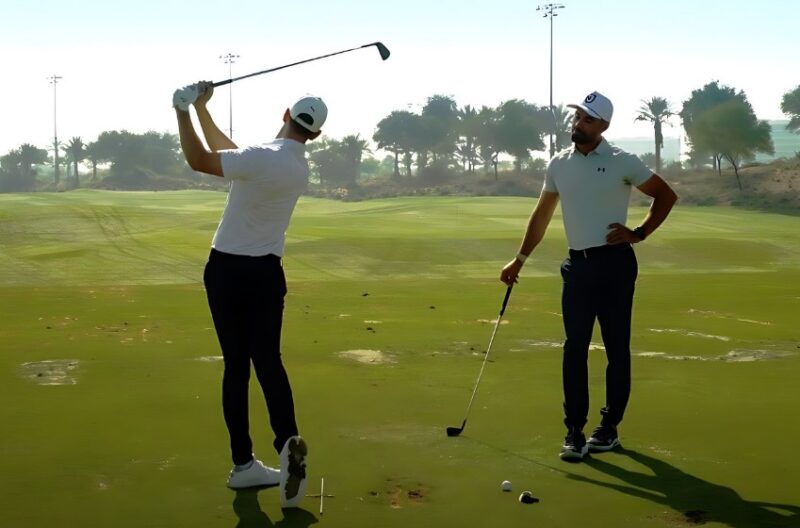
Primarily, follow-through is the culmination of all the elements of the swing coming together in harmony. It’s not merely the end phase of the swing but a crucial component that reflects the effectiveness of the preceding motions.
Firstly, a well-executed follow-through ensures that there is a proper transfer of energy from the golfer to the ball. This transfer is pivotal for achieving the desired distance and accuracy. When a golfer completes it, it indicates that the energy generated from the swing’s momentum has been efficiently transferred. A truncated or incomplete f, on the other hand, often results in a loss of power and direction, leading to less effective shots.
Moreover, it serves as a diagnostic tool. It gives insights into the earlier parts of the swing. For instance, a balanced and poised move suggests that the golfer maintained good balance and rhythm throughout the swing.
Conversely, if a golfer finds themselves off-balance at the end of their swing, it could indicate issues earlier in the process, such as improper weight shift or alignment problems. Furthermore, a proper one aids in developing muscle memory.
Consistent practice helps engrain the movements into a golfer’s muscle memory, leading to more consistent and fluid swings. It’s a vital aspect of training, especially for amateurs who are honing their skills.
Key Elements of a Proper Golf Follow-Through
A proper golf swing follow-through is fundamental to the effectiveness and efficiency of your entire swing. It ensures that the momentum and energy cultivated in the earlier phases of the swing are optimally utilized. Each element plays a distinct role in perfecting this crucial phase, contributing to the overall success of your shot.
- Hip Rotation: The hips should fully rotate towards the target, signifying complete energy transfer. This rotation is vital for power generation and stability, as it anchors the lower body, allowing the upper body to move more freely and powerfully.
- Weight Shift: By the end of the swing, the majority of your weight should be on the front foot. This shift indicates a proper transfer of momentum and is crucial for maintaining balance and generating sufficient power in your shots.
- Arm Extension: Your arms should be fully extended, following through in a natural arc. This extension is key to maintaining the club’s speed and trajectory, ensuring the ball follows the intended path.
- Relaxed Grip: While your arms are extended, maintaining a relaxed yet firm grip on the club is essential. It allows for a smoother swing and better control over the club’s movement.
- Controlled Finish: The final pose of your follow-through should be balanced and controlled, with your body facing the target and the club positioned over your shoulder. This poised finish reflects the overall quality of your swing, indicating good control and balance throughout.
- Facial and Body Relaxation: Tension in the face or body during the follow-through can disrupt the flow and balance of your swing. Maintaining a relaxed posture helps in executing a fluid, effective swing.
- Eyes on the Ball: Keeping your eyes fixed on the ball’s departure point until the completion of the follow-through helps in maintaining focus and alignment throughout the swing.
Common Mistakes and How to Avoid Them
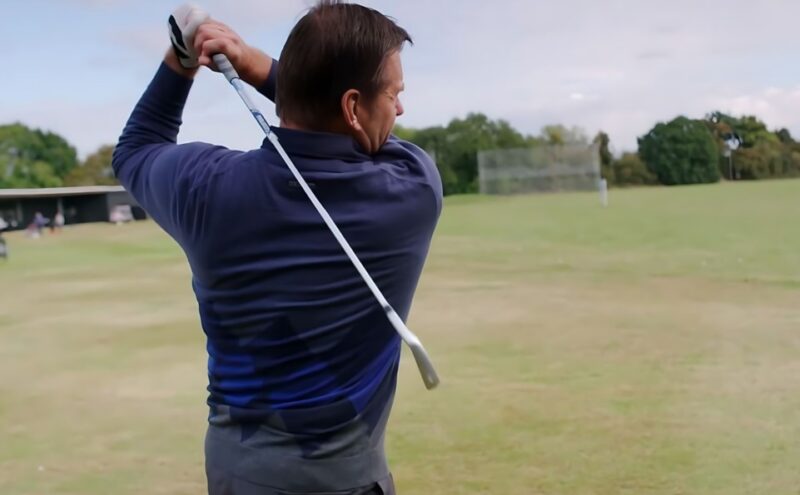
Achieving an effective follow-through is as much about avoiding common mistakes as it is about mastering the right techniques. Recognizing and addressing these errors can significantly improve your swing and overall game.
Inadequate Hip Rotation
A key error is the lack of full hip rotation. This impedes power and impacts accuracy. To correct this, emphasize hip-led movement in the downswing. This approach not only boosts power but also aligns the shot more accurately.
Incorrect Weight Distribution
Improper weight shift is another common issue. Some golfers either don’t shift enough weight to the front foot or do it too early, leading to balance problems or weak shots. A smooth transition of weight from the back to the front foot during the swing, finishing with the majority on the front foot, is essential for a powerful and balanced shot.
Tension in Arms and Grip
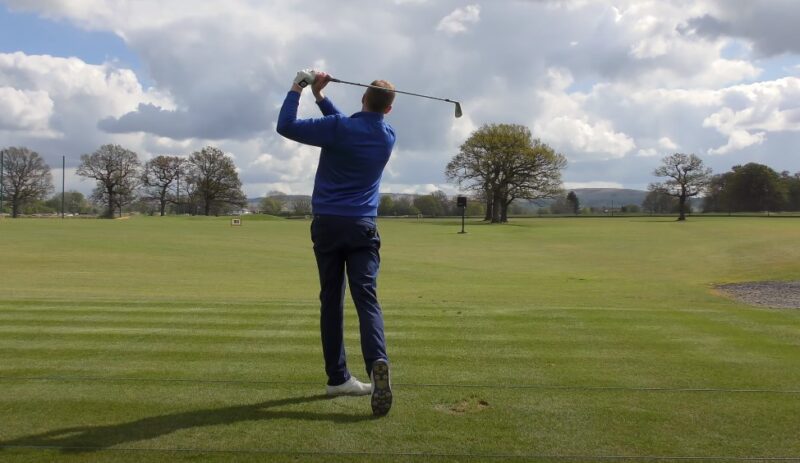
Tension in the arms and a tight grip can hinder the natural flow of the swing. This can be mitigated by maintaining a relaxed yet firm grip and focusing on a fluid arm extension, allowing for a more effective and natural swing.
Neglecting the Finishing Pose
Failing to execute a proper finishing pose compromises balance and control. A balanced finish, with the body facing the target and the club over the shoulder, is crucial. Practicing holding this pose after each swing can help improve balance and overall swing control.
Additional Drills and Exercises
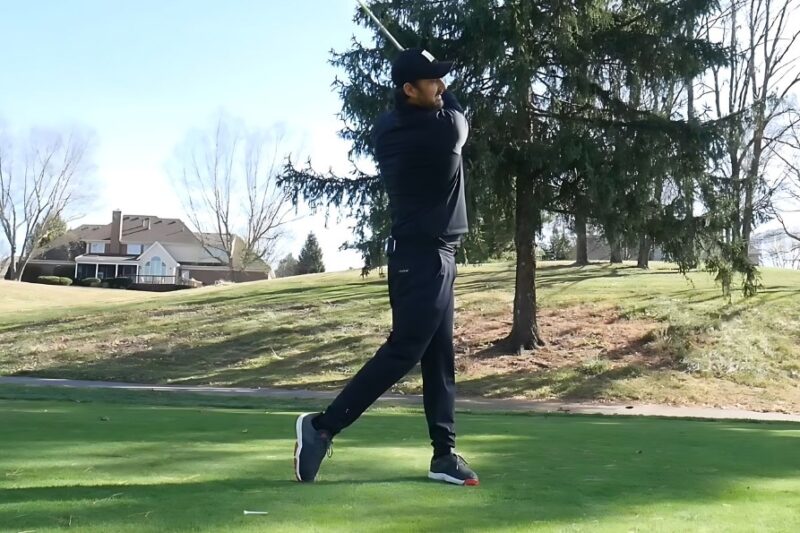
To enhance the effectiveness of your golf swing’s final phase, it’s crucial to engage in targeted drills and exercises. These practices are designed to refine your body movements, ensure better balance, and solidify muscle memory, all of which are essential for a proficient golf swing. Let’s delve into specific drills and exercises that can significantly improve your swing completion.
Slow Motion Swing Drill
This drill focuses on performing your swing in a slow, controlled manner. It helps in understanding the mechanics and feeling each movement, especially as you reach the end of your swing.
Balance Enhancement Exercises
Utilizing balance-focused exercises, such as swinging on an unstable surface, can dramatically improve stability and control, both vital for an effective swing.
Resistance Band Training
Incorporating resistance bands into your training can strengthen the muscles crucial for hip rotation and arm extension, enhancing the power and control of your swing.
Alignment Rod Techniques
Using alignment rods during practice sessions can improve body alignment and positioning, ensuring a more consistent and accurate swing.
Adjust Your Swing with Video Feedback
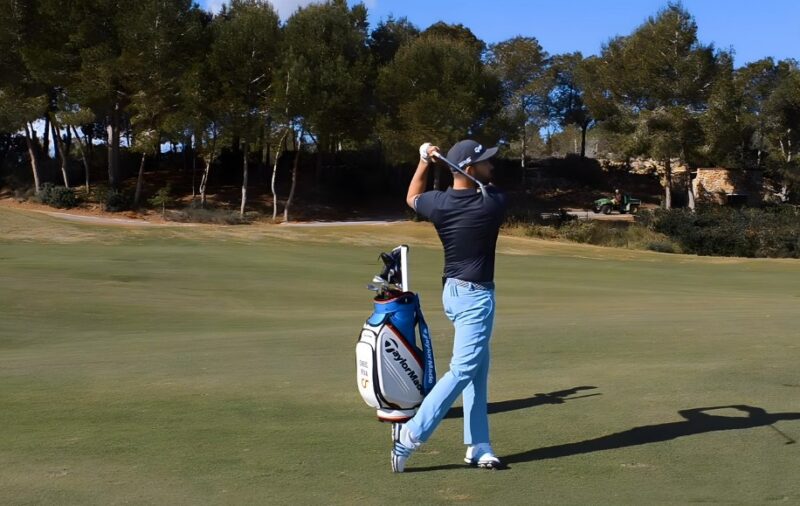
Leveraging video analysis is a powerful tool for refining your golf swing. It provides a clear, objective view of your swing mechanics, allowing for precise adjustments and improvements. Here, we’ll explore how video feedback can be utilized effectively to analyze and enhance your swing.
Capture the Swing
Understand the best practices for recording your swing, including angles and perspectives that offer the most insight.
Identify Key Areas for Improvement
Learn how to analyze your swing to pinpoint specific areas that need refinement, such as posture, grip, and alignment.
Implement Adjustments
Discover strategies for translating the insights gained from video analysis into practical adjustments in your technique.
Proper Equipment is Essential

The right equipment plays a significant role in achieving an optimal golf swing. This section will cover how choosing the appropriate gear can aid in improving your swing, particularly in its final phase.
Select the Right Clubs
Gain insights into how different clubs can impact your swing and what to consider when choosing them.
Proper Grip
Explore the significance of having the right grip on your clubs and how it affects your swing.
Customize Equipment for Your Style
Understand how customizing your equipment to suit your specific style and physique can lead to significant improvements in your swing.
Tips for Maintaining Consistency and Rhythm

Achieving a smooth, consistent swing is not just about technical prowess but also about developing a rhythm that works for your individual style.
Establish a Pre-Shot Routine
Developing a consistent pre-shot routine can significantly aid in achieving a steady rhythm. This routine helps in mental preparation and ensures a focused approach to each shot.
Focus on Tempo
Understanding and maintaining a consistent tempo is key to a rhythmic swing. We’ll discuss techniques to develop and keep a steady swing tempo.
Breathing Techniques
Incorporating breathing exercises into your practice can enhance concentration and relaxation, aiding in a smoother and more consistent swing.
Regular Practice with Purpose
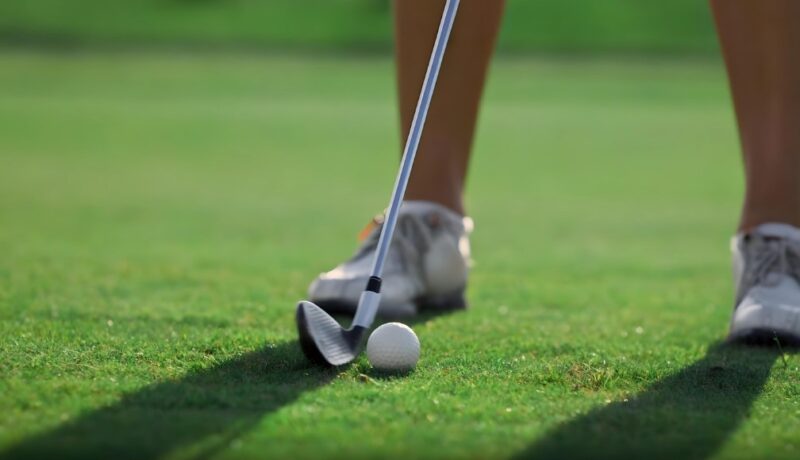
Engaging in regular, purposeful practice sessions is crucial for maintaining consistency. We will cover how structured practice can lead to lasting improvements in your swing.
Use Metronome or Rhythm Training Tools
Utilizing tools like metronomes can help in developing a consistent rhythm in your swing. These tools provide an auditory cue that aids in timing your swing effectively.
Visualization and Mental Rehearsal
Employing visualization techniques and mental rehearsal can reinforce consistency and rhythm, even when you are not on the course.
FAQs
How do you unlock your elbow?
To unlock your elbow, particularly in golf, focus on maintaining a slight bend rather than keeping it rigidly straight. This helps in creating a more natural, fluid swing and prevents strain on the elbow joint.
How can I improve my golf IQ?
Improving your golf IQ involves studying the game, including its rules, strategies, and course management techniques. Regularly playing, watching professional matches, and learning from experienced golfers can also greatly enhance your understanding of the game.
Do pros have swing thoughts?
Yes, many professional golfers have swing thoughts, which are key focus points or cues they use during their swing to maintain consistency and control. These thoughts can vary greatly from golfer to golfer and often evolve with experience and training.
Where do you focus your eyes when hitting a golf ball?
When hitting a golf ball, it’s best to focus your eyes directly on the ball, keeping your gaze steady through the swing. This helps in maintaining concentration, ensuring accuracy, and achieving better contact with the ball.

